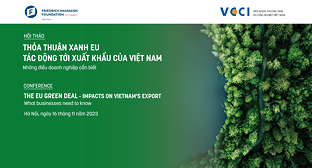Invisible Trade Barriers: Trade Effects of US Antidumping Actions Against the People’s Republic of China
13/08/2014 12:00
I. Introduction
In recent years, invisible trade barriers have been frequently implemented to protect specific industry in local economy among many countries. The World Trade Organization (WTO) imposes strict requirements to qualify for tariffs protection via escape clause and tariffs will be granted only if rising imports are the most important cause of injury to the domestic industry.
This criterion is difficult enough to establish that escape clause protection is not used frequently. Alternatively, firms can file for import protection under the “antidumping” provision of the WTO. Antidumping deals with cases where it is believed that a foreign firm is selling goods in the home (importing) market at either a lower price than in its own market, or if there is no foreign prices to observe, then at less than its average costs of production. The criterion for antidumping case is much easier to meet than that for the escape clause case and it does not require the additional approval of the president. WTO member countries gradually adopted nontariff barriers as new trade protection strategies. The withdrawn and settled cases result in a significant increase in market prices, with losses for consumers in usual cases. These barriers are not only effective, but much concealed. There are three different categories of invisible barriers: antidumping, technical barriers, and environmental barriers. Undoubtedly, antidumping is the most direct measure; therefore, it gets the most attention.
The trade friction between the People’s Republic of China (PRC)—the largest targeting economy of antidumping, and the United States (US)—one of the leaders in increasing antidumping activities, naturally draws our attention. The PRC has been subject to antidumping investigation initiated mainly by the European Union (EU), India, and the US. Important questions that are well worth in-depth analysis can be whether the antidumping actions of these
countries had a significant effect on the PRC's export and do they really have trade remedy effects on domestic industries?
The empirical research on antidumping other than the PRC’s case has mostly focused on the antidumping law in the eurozone and the US while the existing literature in connection with the PRC mainly focus on the antidumping cases filed by the PRC. In order to shed more light on the efficacy of antidumping law, we focus on the antidumping cases in the US petitioned against the PRC. Analysis of the impact from these cases on the bilateral international trade
between the US and the PRC helps provide a credible basis on the effectiveness of the US antidumping policy and the various factors that affect the final results of antidumping.
We present the evidence of the trade restriction effects. However, the efficacy of an imposition of antidumping tariff is short-lived and feeble while it creates trade diversion effects.
Additionally, it effectively raises the price of the product concerned, especially price of imports from the PRC. We also find that the level of antidumping duty, PRC's market position in US market, and the importance of US market share in the PRC significantly affect the impact of antidumping measures.
Các tin khác
- The Dispute Settlement Crisis in the World Trade Organization: Causes and Cures (16/03/2018)
- Modification of trade defence rules regarding non-market economy costs and prices (23/02/2018)
- Research Paper: Options for Disciplining the Use of Trade Remedies in Clean Energy Technologies (03/08/2017)
- Addressing the rise of Trade Remedies against Environmental Goods (03/08/2017)
- Anti-dumping Retaliation - —A Common Threat to International Trade (15/11/2016)
 Home
Home
 About Us
About Us




















